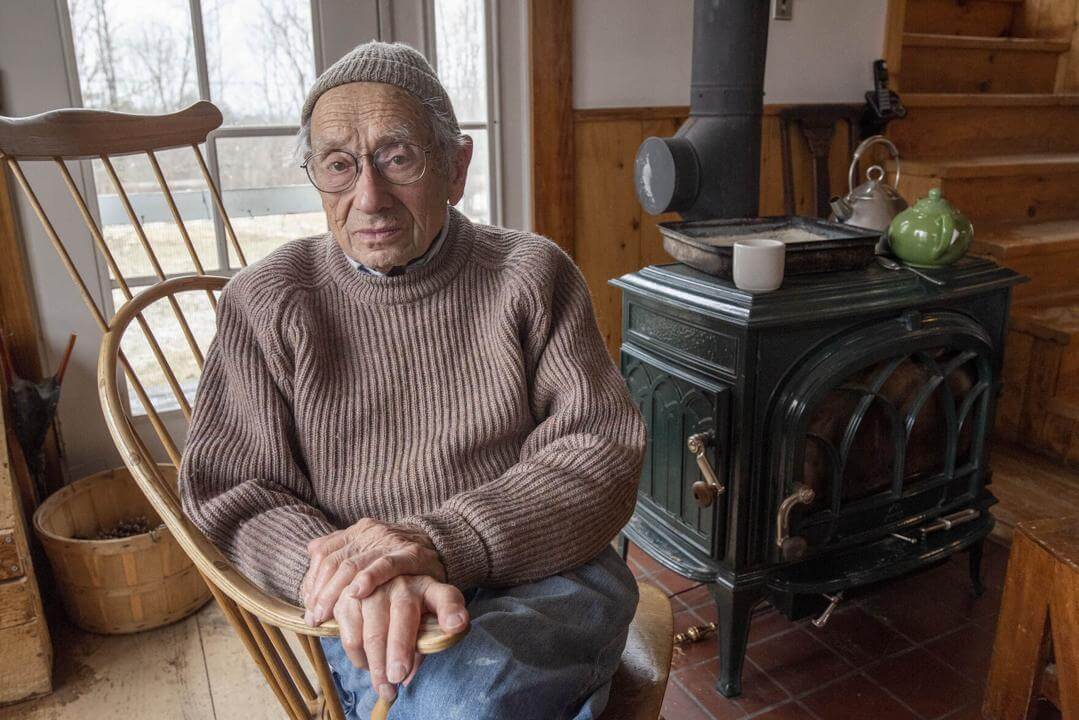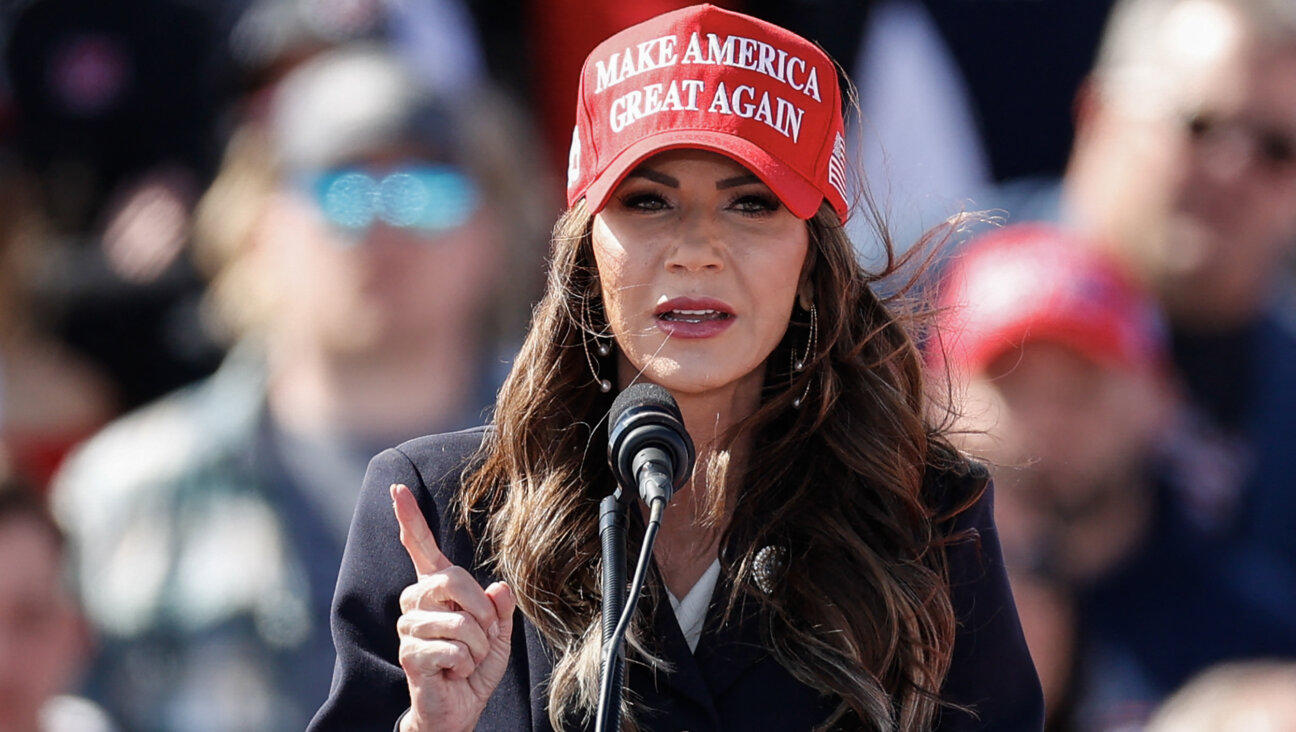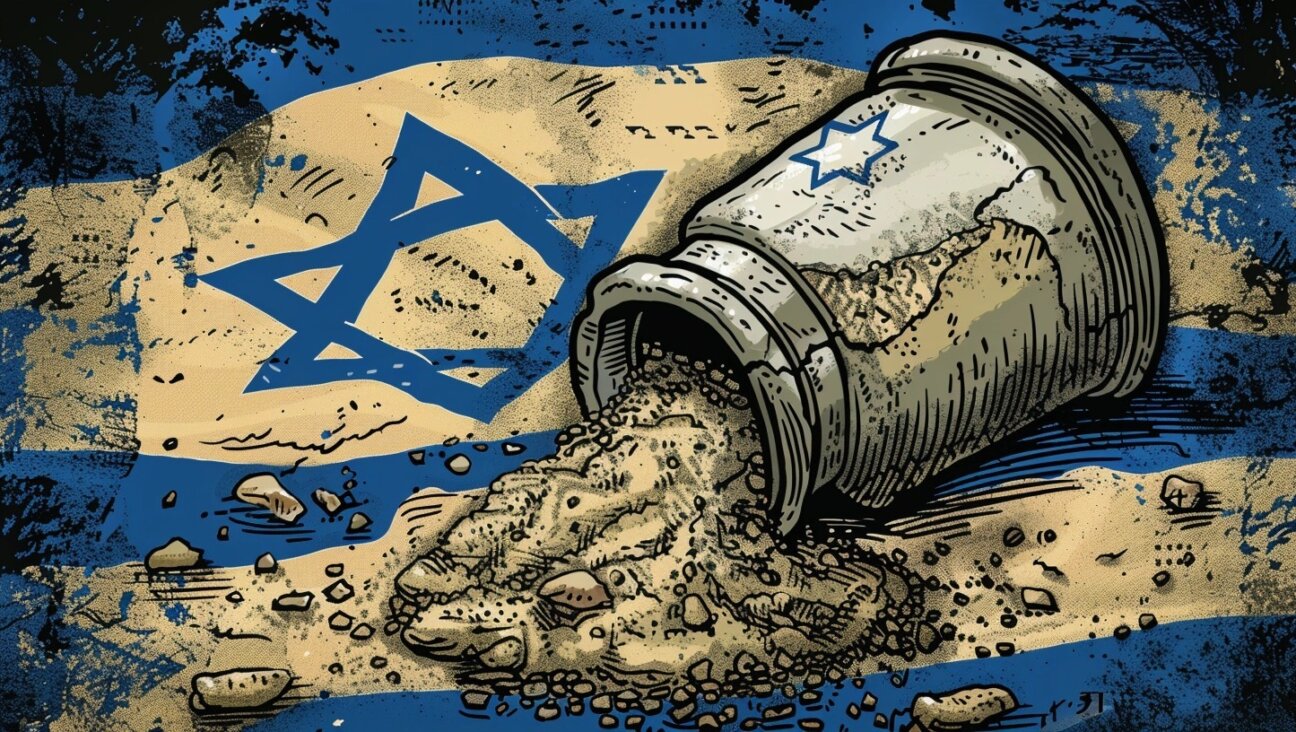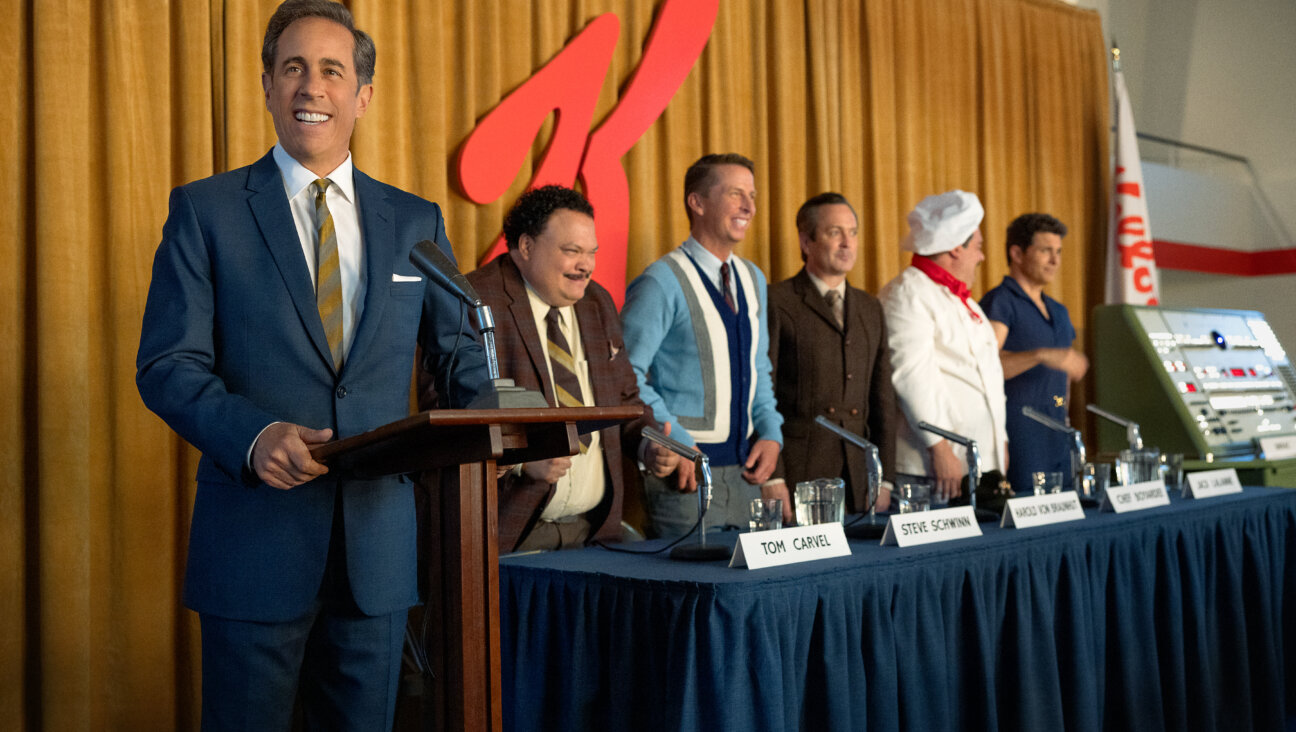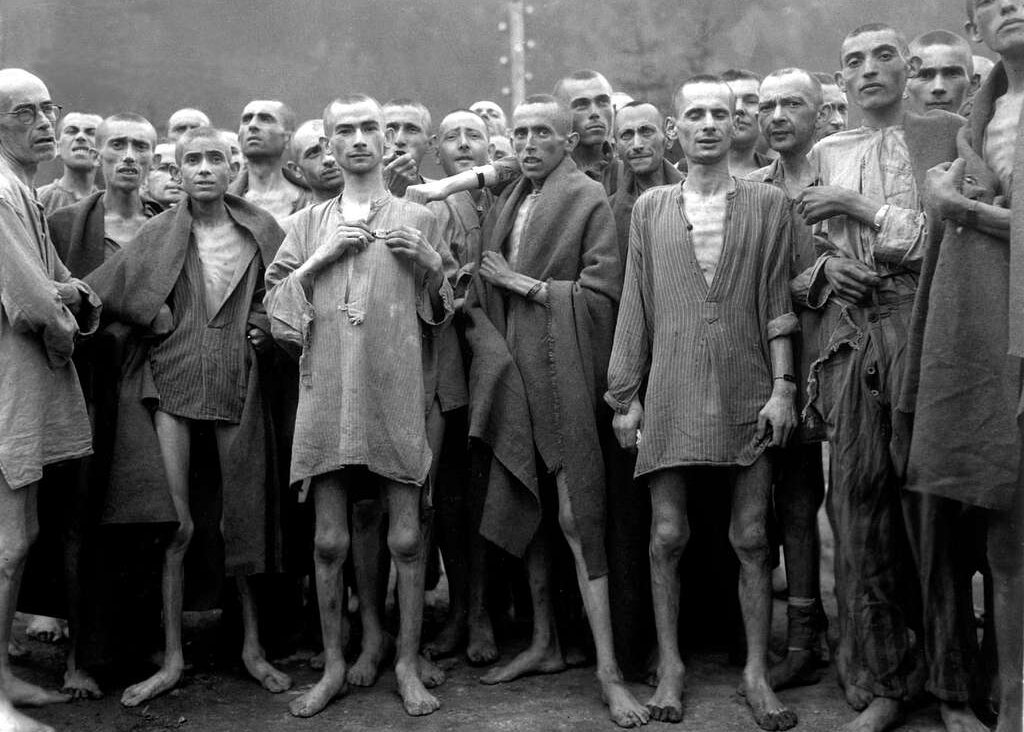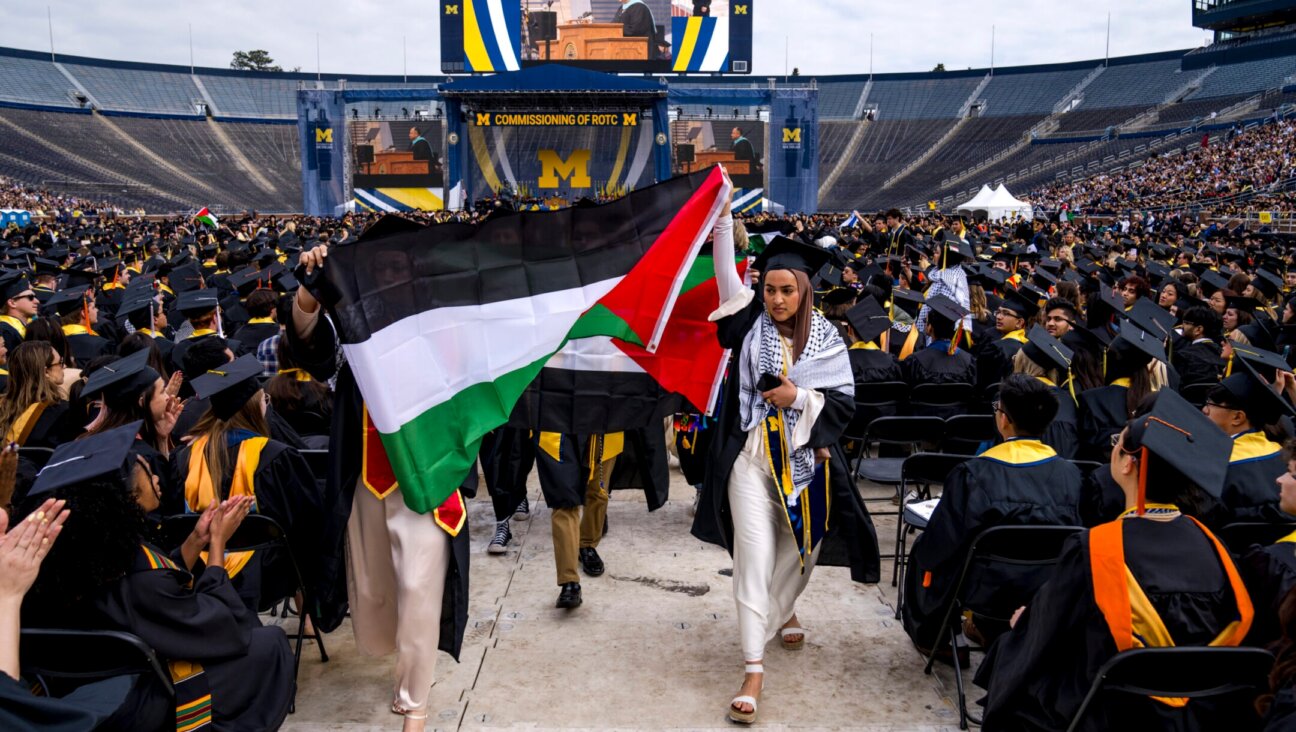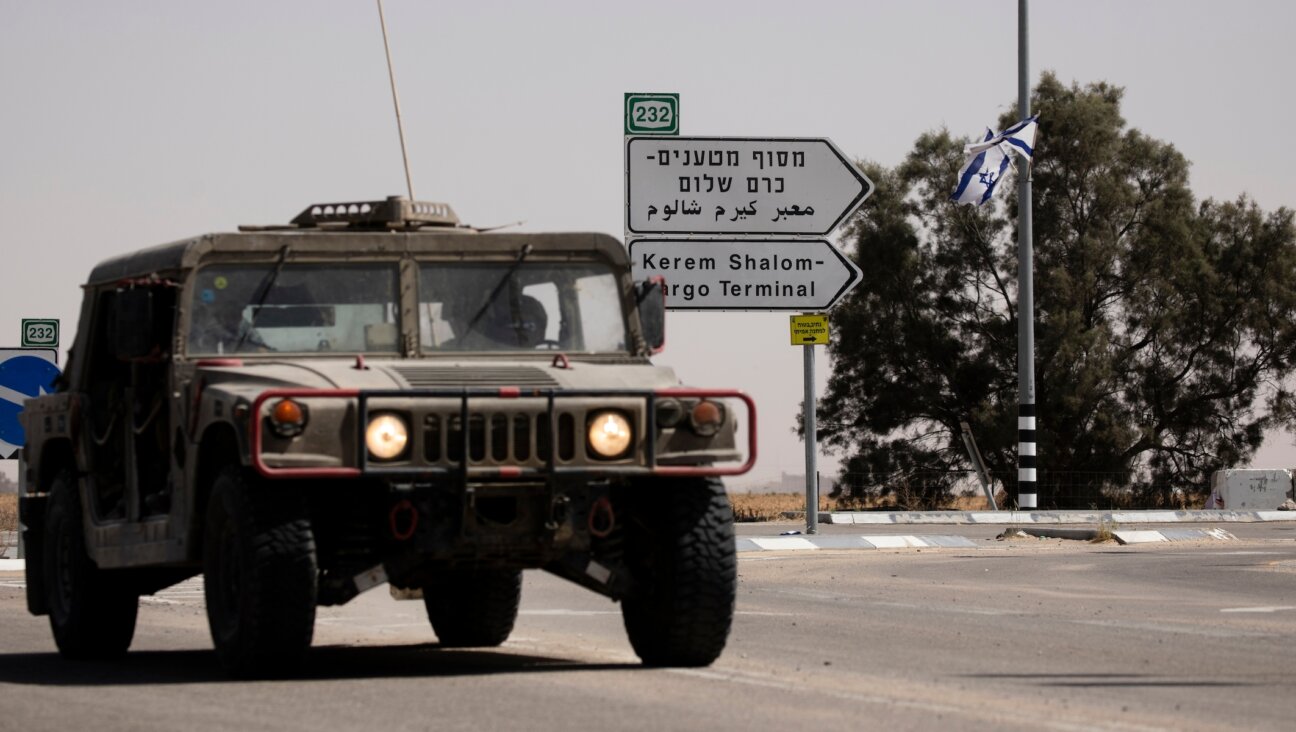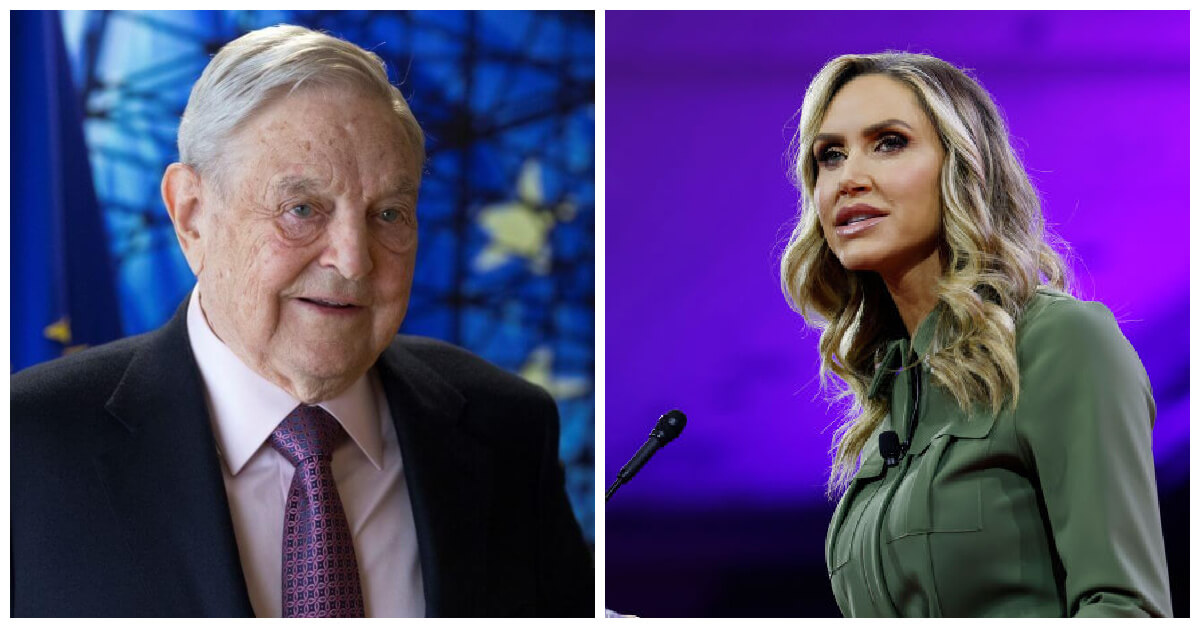Liberal New York Jews Must Engage With Orthodox — History Proves It

New York’s Lower East Side Image by Getty Images
JEWISH NEW YORK: THE REMARKABLE HISTORY OF A CITY AND A PEOPLE
By Deborah Dash Moore
NYU Press, 512 Pages, $30
You see it everywhere now: anxiety about America’s Jewish future. Panel discussions and synagogue sermons and angsty op-eds, alarmed missives with a touch of bewilderment, all wondering about the right way forward. We’re intermarrying, assimilating, disappearing, and what should be done about it? The focus is on young people, of course. Do we send more of them to summer camp and on Birthright trips? Do we create a new and improved Judaism for them, packaged with a handy app, maybe? And what about the intermarried? Shun them, keep them or get more of them? Because there’s no way to stop intermarriage. Or is there? Maybe there’s an app for that.
The truth, as the totality of the evidence shows, is that American Jews aren’t going anywhere. What they are going to be is very, very different. Nowhere will this difference be more evident or sooner seen than in New York, capital of American Jewry. And this difference is nowhere more startling than when observed within the longer trajectory of New York’s Jewish history.
Allowing us to look back at that history is “Jewish New York,” a new volume by Deborah Dash Moore and a group of collaborators, where the chronicle of one particular night stands out.
It was Election Day 1914, and Jews on New York’s Lower East Side were hoping to elect one of the few avowed Socialists ever to run for Congress. As night fell, tens of thousands streamed toward Seward Park, opposite the 10-story Forward building, home of the leading Jewish newspaper in New York City, the Yiddish-language Forverts. As the election results came in for each district, a stereopticon projected the information onto the building, and the crowd cheered raucously for their favored candidate: Meyer London, a beloved labor lawyer who lived among the Lower East Side masses and was running for Congress on the Socialist Party ticket.
It was 2 a.m. when the results were confirmed, and Meyer London became the first Yiddish-speaking Russian Jewish immigrant elected to Congress. Strangers hugged and kissed one another, they sang the Marseillaise. Then, London himself appeared, standing on top of a car, and gave a rousing speech. A few days later, London held a victory rally at Madison Square Garden with more than 10,000 people, then went on to serve three terms in Congress, where he proposed legislation concerning unemployment, child labor, health insurance and the aging, among other issues.
These largely forgotten events in New York Jewish history marked a high point of what would be a long history of Jewish progressivism. The New York Times referred to London as the “prophet” of the Lower East Side, and socialism had purchase on many New York Jews, with institutions such as the Forward, the Workmen’s Circle and various labor unions tirelessly advocating social reforms and endorsing the Socialist Party. For decades, Jews in New York embraced a liberal Democratic platform, with echoes of early socialist fervor still calling, even as the Socialist Party’s political base largely disintegrated as anti-Communist sentiment surged following the Russian Revolution in 1917.
At the time of London’s first election bid, the Jewish population of the Greater New York area was nearly 1.7 million. Already a decade earlier, according to “Jewish New York,” New York City “constituted the largest Jewish urban community in world history.” It held that distinction through the century that followed, even as demographics shifted, and the Jews of New York took on a different character.

Meyer London Image by Getty Images
Today, a century after London’s tenure in Congress, Jewish New York is a very different place, but what has not changed is New York’s status as America’s Jewish capital. This past summer, at a Jewish Heritage Reception event at Gracie Mansion, the home of New York City’s mayor, Bill de Blasio, the mayor mentioned a recent visit by Jerusalem’s mayor, Nir Barkat. “I reminded him,” de Blasio said, “that my Jewish community is larger than his Jewish community.” Dani Dayan, Israel’s Consul General in New York, replied good-naturedly about New York being “the city that fantasizes it is the capital of the Jewish people.”
At the same time, it was that very Gracie Mansion event that made it starkly evident what a future Jewish New York will look like. A good portion of those in attendance were dressed in ultra-Orthodox or Hasidic garb. The mayor’s liaison to the Jewish community is a Hasidic Jew from Borough Park named Pinny Ringel. One could be forgiven for thinking that his liaising is primarily to the Orthodox, and not, say, to liberal Jews on the Upper West Side.
While de Blasio is a progressive, his famously cozy ties with the ultra-Orthodox are a function of pragmatism. As far as actual political sentiment, the Orthodox community leans strongly conservative. In the 2016 presidential election, Donald Trump was heavily favored among the Orthodox, the only Jewish group to give him a majority of its votes. As the Orthodox community has grown, the general political leaning of New York Jews has tilted toward the right, far afield from its old reputation as a bastion of progressivism.
The explosive growth of the Orthodox population, which is only expected to continue, will further increase this political shift to degrees we have yet to appreciate. Survey results show that 61% of Jewish children in the greater New York City area are Orthodox, and for the first time in half a century, the Jewish population of the five boroughs has increased, due entirely to the birth rate among the ultra-Orthodox.
“Jewish New York” allows us to see what is most startling in recent developments. Panning backward to the earliest Jewish settlers in New York, these recent shifts indicate not only a religious and political realignment, but also something far newer and unsettling: a politically ascendant Jewish segment that the rest of the Jewish world barely acknowledges or engages. In the past, Jews professed that we are all one people, a single family, a unit that held despite all our divisions. Now that unity is eroding. The religious, political and socioeconomic ramifications will be substantial in the years ahead.
New York Jewish history begins in September 1654, just days before Rosh Hashanah, when 23 Jewish refugees arrived in New Amsterdam from the former Dutch colony of Recife, which had just been captured by the Portuguese, who immediately expelled all Jews and Protestants. An outpost of the Dutch West India Company, New Amsterdam was governed by the anti-Semitic Peter Stuyvesant, a strict Calvinist autocrat, who wanted these Jewish refugees gone. “A deceitful race,” he called them in a letter to his superiors. The West India Company, whose board of directors included a number of Jews, instructed Stuyvesant to allow the Jewish refugees to stay, and the first community of North American Jews was established.
Or so the common narrative goes.
The truth is, these were not the first Jews in the city — there were at least four others at the time — and most of the 23 arrivals left within the year. However, more Jews arrived soon after, and when the British took the colony in 1664, Jews petitioned for the right to public worship and construct a synagogue. They first gathered in a nondescript house, establishing Congregation Shearith Jacob; in 1730, they constructed North America’s first synagogue building, renaming the community Shearith Israel, also known as the Spanish and Portuguese synagogue, which still exists, in a different location, and is active today.

Image by Getty Images
Jewish New York has been constantly changing, which is perhaps one of its very few constants. Another more salient constant was its divisions. From the very beginning, there were tensions. Poorer Jews protested the preferred treatment given to the wealthy at Shearith Israel, where congregants of lesser means were often denied seats and forced to stand through hours of services. Ashkenazi Jews huffed about the use of Sephardic customs when Ashkenazi Jews formed a majority. During one tempestuous period, one congregant summoned another to court over a physical brawl that began with a quarrel over an open window in the women’s section, and the community issued its first and only excommunication, which was followed by a counterthreat to publish a book exposing the synagogue’s sins. As “Jewish New York” notes, at Shearith Israel, “the elders’ most difficult and time-consuming task was maintaining the peace.”
During the Revolutionary War era, Jews were both patriots and loyalists. Although much of Shearith Israel’s community joined the patriot cause and fled to Philadelphia, a couple dozen Jews remained loyal to King George III. The latter group ended up preserving Shearith Israel, holding off the British, who wanted to turn the synagogue into a hospital.
Before the Civil War, Jews of New York were either silent about or opposed to abolition, but when the war came, Jews fought on both sides. A stir took place one day in Natchez, Mississippi, when a group of Union soldiers stepped inside the synagogue; they were Jews, it turned out, and they just wanted to attend services. In 1862, Jewish soldiers of the Confederacy bought matzo in Charleston, while northern Jewish soldiers stationed in West Virginia had Seder supplies sent from Cincinnati.
After the Civil War, Jews in New York split more fiercely along religious lines, with an ascendant Reform movement challenging tradition more openly and boldly. Temple Emanu-El, the city’s first Reform congregation, introduced mixed seating for men and women, and even insisted that male congregants attend services bareheaded. In the 1880s, a series of debates between rabbis Alexander Kohut and Kaufmann Kohler around the relevance of Jewish law provoked two important events in American Judaism. The first was the Pittsburgh Conference, which produced the famous Pittsburgh Platform articulating the principles of Reform Judaism. The second was the establishment of the Jewish Theological Seminary, which was to affirm a more traditional Judaism synthesized with American culture. These events asserted New York’s centrality in American Judaism, but they also asserted Jewish cross-denominational engagement. Even in debate, there was no doubt that each side was deeply invested in where Jews went as a whole.
The turn of the 20th century brought an unprecedented wave of immigration. Some 2.5 million Jews arrived in the U.S. from Central and Eastern Europe, and a good bulk of them settled in New York. As the 20th century crept onward, New York’s Jewish demographics changed dramatically, first in the interwar period, and even more so in the post-WWII era. With the siren call of middle-class living, the suburbs beckoned, and Jewish neighborhoods all over New York were completely transformed. Heavily Jewish Brownsville, so memorably rhapsodized by Alfred Kazin in “A Walker in the City,” was largely emptied of its Jews between the late 1960s and early 1970s. Through the 1970s, the South Bronx lost more than 300,000 residents as Jews took flight from drugs, crime and abandoned buildings. Finally, the influx of Orthodox Jewish Holocaust survivors and the growth of ultra-Orthodox communities in Brooklyn transformed a population known for its political progressivism to one that is increasingly parochial and socially conservative.
Through all of this, up until several decades ago, Jews in New York remained a remarkably distinct group. The Orthodox, even at their strongest, were still a minority, and the divisions between them and the rest of the Jewish world were not so clearly stratified. A sense of Jewishness was still strong even among the assimilated. Jews also still came together during important historical events, such as the movement for Soviet Jewry. Even during periods of disharmony and acrimony, there was a recognition that these were interfamilial struggles. Despite fierce disagreements, bonds of kinship between Jews of different stripes were seldom in doubt.
The present anxieties about the American Jewish future are rooted at least partly in the results of the 2013 Pew Research Center study of American Jews, which stunned many. The nationwide survey revealed that 71% of non-Orthodox Jews in America are intermarrying and two-thirds of them aren’t raising their children as Jews. Even without intermarriage, the non-Orthodox birth rate, at 1.7, isn’t enough to maintain current numbers. Only the Orthodox are thriving, with their 4.1 children (and many more, within Haredi households), and with negligible attrition and inter- marriage rates.
Ideas are desperately being sought, and strategies for reinvigorating young Jews with an appreciation for Jewish continuity are being strenuously debated. One striking aspect of the current discourse, however, is what we’re not doing. We’re not looking at those who almost certainly will be contributing to America’s Jewish future: the Orthodox.
In a 2016 conversation on the “Judaism Unbound” podcast, Yehuda Kurtzer, president of the Shalom Hartman Institute of North America, spoke of today’s challenges to the idea of Jews as one people. One of these challenges is what Kurtzer calls the “B’nei Brak Test.” To illustrate, Kurtzer noted that he once asked a group of Jews in Palo Alto, California, how they’d feel if they encountered a group of Haredi Jews from B’nei Brak who shared neither their values not their political or religious beliefs. “Would you treat them with greater concern or empathy than your neighbors in Palo Alto who happen not to be Jewish?” Kurtzer doesn’t tell us what his Palo Alto friends said, but he himself suspects the answer is no. We might like the idea of Jewish peoplehood in theory, but in practice, the liberal progressive non-Orthodox Jew’s kinship with the Haredi Jew in B’nei Brak or Monsey or Kiryas Joel is felt tenuously at best.
I saw this tenuousness at a conference devoted to the topic “Jewish in America” last summer in Maryland. During two separate sessions, I heard several people state, in almost the exact same words, the following: American Judaism is basically an embrace of liberal progressive values. This assumption went largely unchallenged. The idea that a sizable, fast-growing group of Jews does not define its Jewishness in such terms seemed at best a matter of trivia.
There’s the old story of a man crawling on his hands and knees on a sidewalk, feeling the pavement with his hands, looking, searching. Another man passes and asks, “Sir, have you lost something?” Yes, the man on the ground says. He has lost a few valuable coins and is desperate to find them. The other man drops to his knees to assist, but after finding nothing, asks, “Are you sure this is where you lost them?”
“No,” the first man says, “I lost them a couple blocks over.” The other man looks befuddled. “Why, then, are you looking for them here?” The man on the ground looks up, irritated. “Fool,” he says, and points to the streetlamp. “This is where the light is. There’s no streetlamp on that other block.”
In some sense, it seems, we, too, are looking for what we’ve lost in the wrong place. We say we’re looking for an American Jewish future, but what we’re really looking for is an American Jewish future that is liberal and pluralistic and that embraces modernity and all the values liberal Judaism has claimed for itself. It isn’t a Jewish future we want, but a Jewish future of a certain kind. It strikes me as obvious, but it seems it needs to be said: The place to seek a Jewish future is not among people who don’t want to be Jewish. It’s among those who will be.
The common rejoinder is that Orthodoxy isn’t the Jewish future in crisis. It’s liberal Judaism we’re losing. To me, though, that’s exactly the point. We’ve given up on engaging the Orthodox on the essential values important to us as liberal Jews. We assume the Orthodox, because of their religious orientation, cannot also embrace liberal values, and so there’s no use bothering with them.
The Orthodox are often accused of delegitimizing the non-Orthodox, but the non-Orthodox world can be accused of just as great an offense: complete indifference to the Orthodox. Many of us fail Kurtzer’s “B’nai Brak Test” and don’t seem troubled by it.
Of course, the Orthodox are not a monolith, and it’s important to distinguish between Modern, Centrist and ultra-Orthodox, or Haredim. This last group has seen the most explosive growth of all, and with ongoing demographic shifts, it is distinctly possible that within an Orthodox majority, an ultra-Orthodox majority will dominate.
Ultra-Orthodoxy is a fundamentalist strain within the most conservative strains of Judaism, and, as such, it is rigid, dogmatic and, in many instances, oppressive. Ultra-Orthodoxy takes the Torah as the immutable, literal word of God, and its narrative as factual and historic. The Haredi worldview is deeply suspicious not only of the hedonistic excesses of modern life — which reasonable people can argue about — but also of the very worthiness of secular wisdom. The Gentiles have no Torah, the Talmud says, but they do have wisdom. As the Haredi community sees it, though, whatever wisdom exists among the Gentiles, let the Gentiles keep it. The irony, of course, is that ultra-Orthodoxy is as strong, as vibrant and as resilient as it is precisely because it avails itself of that secular wisdom when it needs it, and is then able to retreat to insularity when it doesn’t; it has easy access to the most advanced scientific, technological and economic infrastructure, even as it does not partake in the enterprise of furthering it.
The ultra-Orthodox would love nothing more than to be ignored by the rest of the Jewish world. Those who were raised within it but have chosen to leave it (which includes yours truly) are frequently told: Move on and good riddance, and stop pestering with your criticisms. The rest of the Jewish world can be enamored by a Chabad rabbi and his lovely wife who set up shop in Topeka, Kansas, or Calcutta, India; all one sees is the polished veneer of the warm family embrace. The unseemly undersides remain hidden in Brooklyn and Rockland County. But those of us who know the Haredi world intimately know those undersides, know how crucial it is to address them and speak up about them. What is stunning is the lack of voices joining in.
Naftuli Moster, a former Belz Hasid and executive director of Yaffed, an organization working to improve the general studies curricula in New York’s Hasidic schools, where the legal requirements for educational curricula have for decades gone ignored, has told me that his organization receives little to no support from the broader Jewish world. The vast majority of Jewish foundations have declined to support his organization for fear of antagonizing the Haredim.
A small number of other organizations exist that engage with the problems in the Haredi world, but their issues are far from the broader Jewish agenda. Footsteps, an organization that helps those who wish to explore the world outside their Haredi enclaves, with which I’ve worked closely, is a small organization that operates largely outside the mainstream Jewish organizational network. Unchained At Last, founded by a former Haredi woman who, as a teenager, was pressured into an arranged marriage that turned violently abusive, seeks to help women get out of similar situations, but it also operates largely unknown to the broader Jewish world. These — and others — are small organizations with big missions, missions that should be the purview of all Jews, but aren’t.
It’s a long way from a time when such matters would have been intra-communal concerns, and that’s worth remembering. Meyer London, the Yiddish-speaking congressman from New York, was not popular with all Jews, but all paid attention to him. In 1917, he balked at endorsing the Balfour Declaration and earned the ire of the more moneyed and powerful Jews of New York whose interests differed markedly from those of the teeming downtown tenements. Jacob Schiff, Louis Marshall, Louis Brandeis and Rabbi Stephen Wise, the leading lights of uptown Jewry and enthusiastic Zionists, spoke out fiercely against London, and he paid with a loss in the 1918 election. But London would go on to win another term in the next election. Jews in New York knew a sincere politician when they saw one, rare as it was, and even those who disagreed with him respected him.
London didn’t live to see his proposals enacted into law, although they would inspire and inform much of President Franklin Delano Roosevelt’s New Deal. London died in 1926, after he was hit by a car while crossing the street reading an Anton Chekhov short story collection. In the ambulance, he entreated his wife to make sure the car driver wasn’t charged. His body lay in state in the Forward building over the next few days, and tens of thousands filed past. A half million people attended his funeral, and he was buried in Poet’s Corner at Brooklyn’s Mount Carmel Cemetery, alongside Sholem Aleichem and Abe Cahan, the Forward’s legendary founder and editor.

Deborah Dash Moore Image by Courtesy of Deborah Dash Moore
“Jewish New York” is a thorough and readable work, complementing other histories of American Jewry, such as Jonathan Sarna’s sweeping “American Judaism,” or more recent works like Shari Rabin’s slim but fascinating “Jews on the Frontier.” The book also presents a world in which Jews saw its dividing lines as mutable, subject to scrutiny and debate. Today, it appears we’ve retreated into our corners with those of like mind and have little interest in engaging those with vastly different positions, let alone fight them.
However, not engaging with the Orthodox is to forfeit the ideological battle. In battles of ideas, agreeing to disagree can work as a tactic, but if it is the end goal, then it is to concede the argument. What we are facing is not only the diminishment of a vibrant liberal progressive Jewish world, but also the fortification of a politically conservative and religiously fundamentalist one. To separate the two issues is to choose the wrong block to look for the lost coins. Instead of looking for the coins elsewhere, perhaps it’s time to install new streetlamps, to engage the Orthodox and ultra-Orthodox worlds on our core values. Their ascendancy shouldn’t be frightening; it should be a reminder that we are all invested in all of us — if we indeed believe we are truly one people.
Shulem Deen is the author of ‘All Who Go Do Not Return.’

I hope you appreciated this article. Before you go, I’d like to ask you to please support the Forward’s award-winning, nonprofit journalism during this critical time.
Now more than ever, American Jews need independent news they can trust, with reporting driven by truth, not ideology. We serve you, not any ideological agenda.
At a time when other newsrooms are closing or cutting back, the Forward has removed its paywall and invested additional resources to report on the ground from Israel and around the U.S. on the impact of the war, rising antisemitism and the protests on college campuses.
Readers like you make it all possible. Support our work by becoming a Forward Member and connect with our journalism and your community.
Make a gift of any size and become a Forward member today. You’ll support our mission to tell the American Jewish story fully and fairly.
— Rachel Fishman Feddersen, Publisher and CEO
Join our mission to tell the Jewish story fully and fairly.







